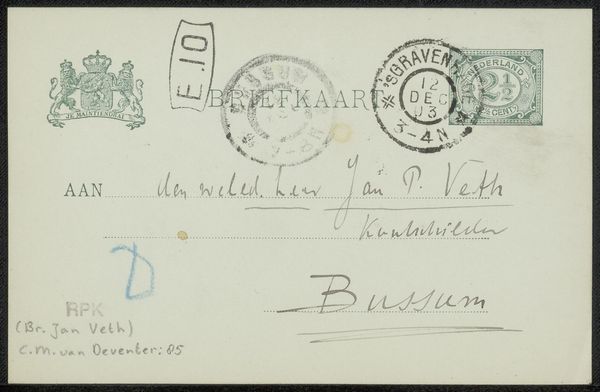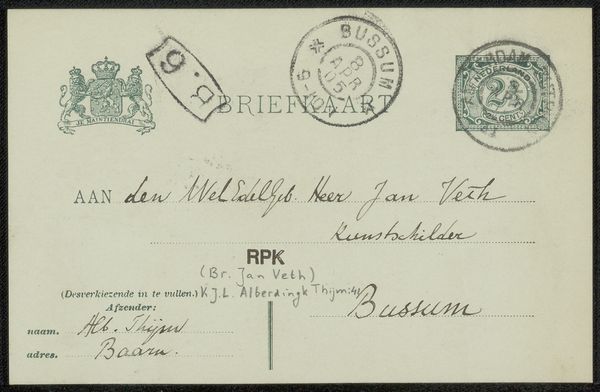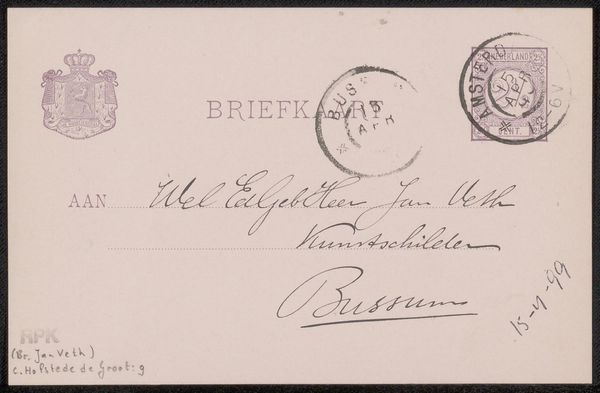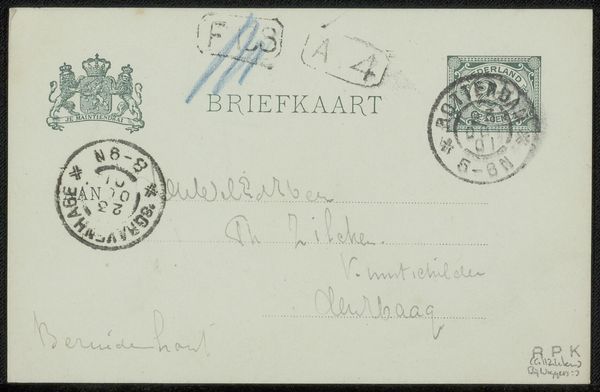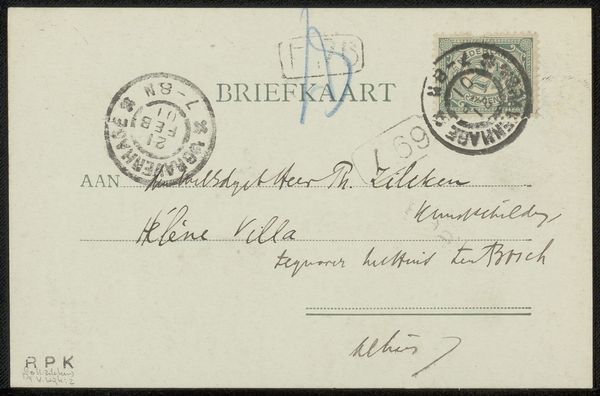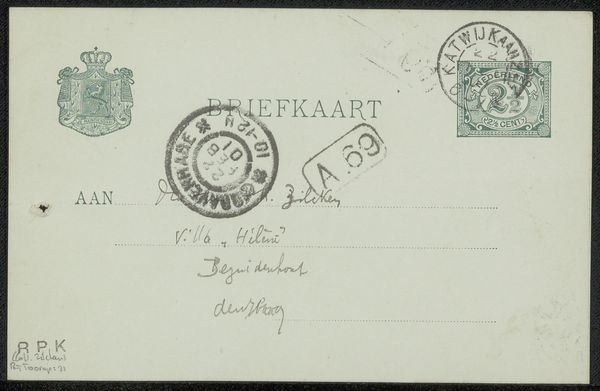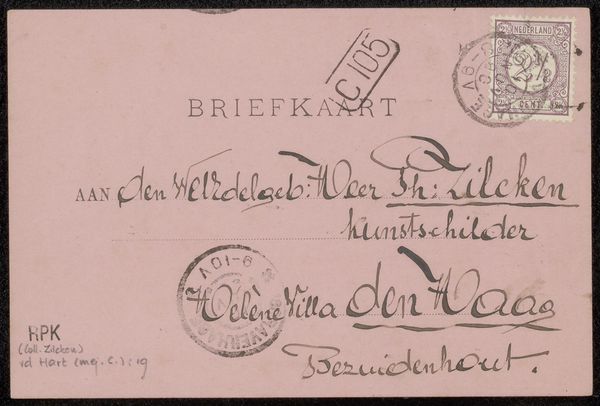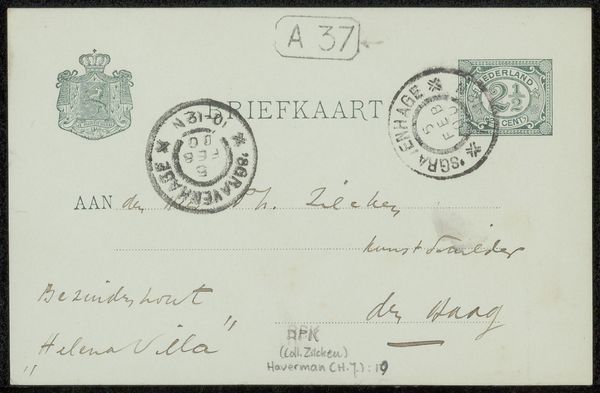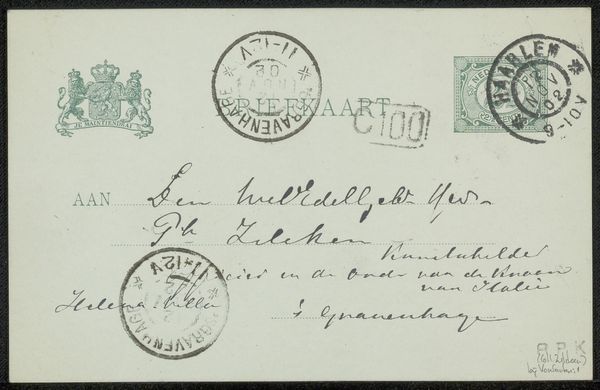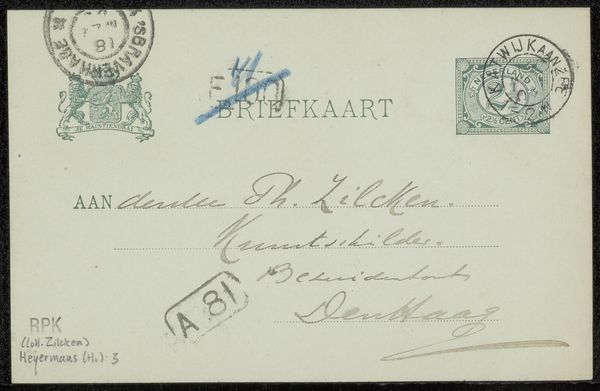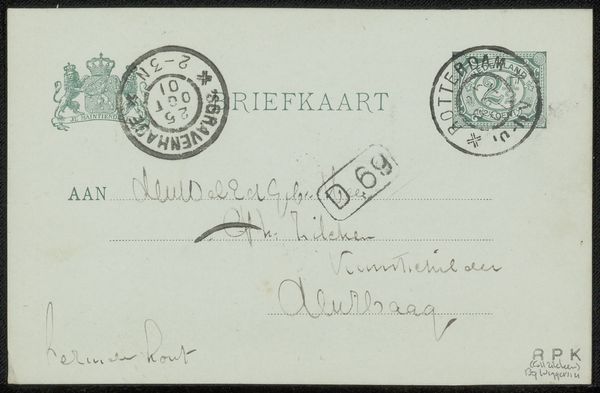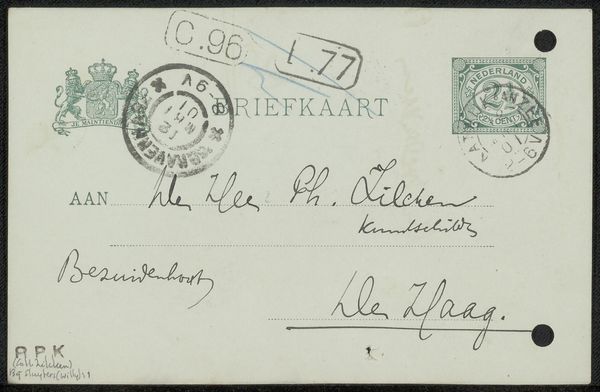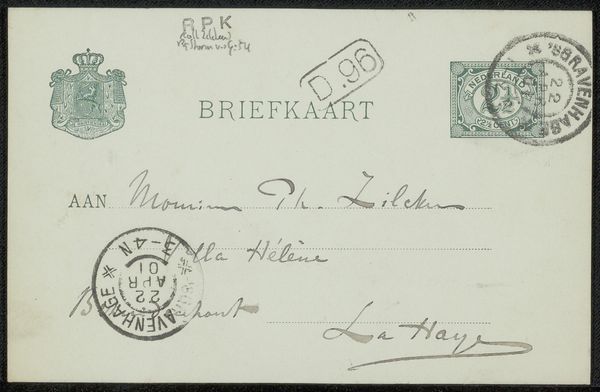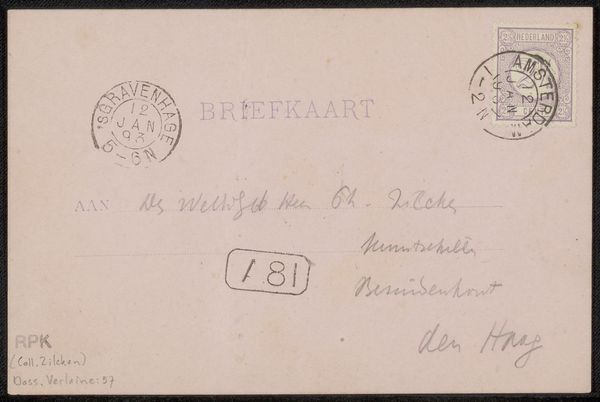
drawing, mixed-media, paper, ink
#
drawing
#
mixed-media
#
art-nouveau
#
hand-lettering
#
hand lettering
#
paper
#
personal sketchbook
#
ink
Copyright: Rijks Museum: Open Domain
Curator: Looking at this work, "Briefkaart aan Jan Veth" by Antoon Derkinderen, likely created sometime between 1902 and 1909, I'm immediately struck by its intimacy. It's mixed-media on paper, a personal artifact transformed into a piece for public viewing. What's your first impression? Editor: My eye is drawn to the script—elegant yet utilitarian, it tells a story of connection. There’s something inherently powerful in seeing communication stripped down to its most fundamental form, especially in this age where much of our communication is mediated through screens. Curator: Indeed. The letter form itself provides crucial context. Derkinderen addresses Jan Veth, an artist, critic, and intellectual deeply involved in the cultural and political dialogues of the Netherlands at the turn of the century. The choice to send a “Briefkaart,” rather than a more formal letter, suggests an immediacy or casualness to their relationship. Editor: I agree. Seeing Veth named there suggests more than just acquaintances. Knowing that Veth's writings championed social justice and workers' rights adds another layer, positioning this simple postcard within that larger progressive movement in art and thought. Do you see the stamp and postal markings playing a role? Curator: Absolutely. These elements anchor the piece within a specific time and place. The postmark "Bussum" and the Dutch stamp mark this card with nationhood and locality—these markings assert its origins. Beyond that, the use of a pre-printed postal card—an item sold by the state postal service—tells a broader story of standardization and the increasing interconnectedness fostered by such services. Editor: You are right. But there is another message beyond this formal delivery and stamp that cannot be understated. To witness something so inherently tied to one individual's life preserved like this brings attention to what and whose life, narratives, and ephemera become preserved. It beckons reflection upon questions regarding representation and power that still echo loudly through society. Curator: Well, by examining what remains we are challenged to ask critical questions about art's function beyond pure aesthetics. Editor: Exactly! By studying works like these, with their intersections of art, social critique, and personal correspondence, we deepen our understanding of a historical period, and hopefully inspire crucial change going forward.
Comments
No comments
Be the first to comment and join the conversation on the ultimate creative platform.
